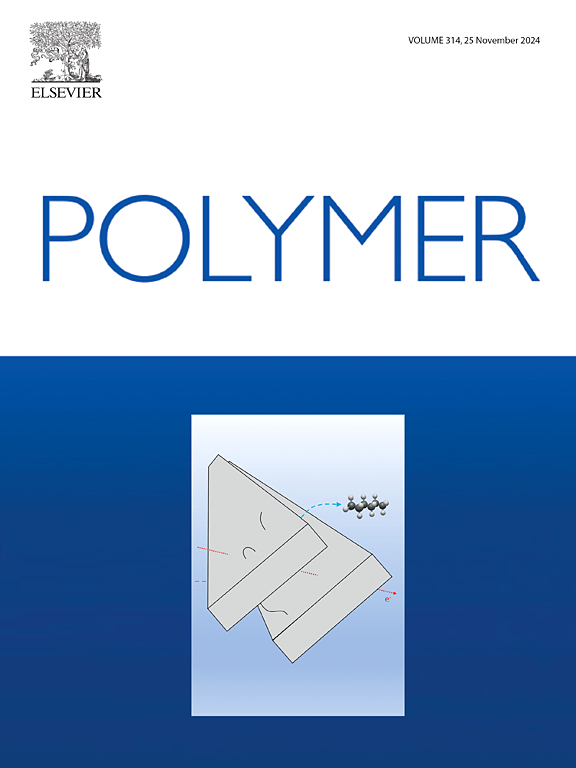纯PA410和复合PA410的等温和非等温结晶动力学模型
IF 4.1
2区 化学
Q2 POLYMER SCIENCE
引用次数: 0
摘要
对半结晶热塑性复合材料的兴趣日益增加,要求对工艺参数与晶体结构发展之间的复杂关系有深刻的理解。本文采用施耐德速率方程对PA410的非等温多相结晶动力学进行了建模。此外,通过Flash-DSC实验,定量了碳黑纳米颗粒和玻璃纤维对PA410结晶动力学的影响。为此,介绍了一种新的样品制备方法,用于制备已知纤维体积分数、适合于Flash-DSC分析的单向纤维增强样品,并用于增强PA410的表征。研究表明,炭黑的引入改变了纯PA410的多态性,抑制了β相晶体的形成,导致α相晶体体积占主导地位。这一发现简化了cb填充和gf增强PA410的结晶动力学模型,其中一组施耐德速率方程足以准确描述它们在等温和非等温条件下的结晶行为。本文章由计算机程序翻译,如有差异,请以英文原文为准。


Isothermal and non-isothermal crystallization kinetics modelling of neat and composite PA410
The increased interest in semi-crystalline thermoplastic composites, calls for a profound understanding of the intricate relationship between process parameters and the development of crystalline structures. In this study, the non-isothermal multi-phase crystallization kinetics of PA410 is modelled with the Schneider rate equations. Moreover, the change in crystallization kinetics induced by the addition of carbon-black nanoparticles and glass-fibres to PA410, is quantified by means of Flash-DSC experiments. To this end, a new sample preparation procedure to make unidirectional fibre-reinforced samples, of known fibre volume fraction, suitable for Flash-DSC analysis is introduced and used for the characterization of the reinforced PA410. The investigations showed that the polymorphism of neat PA410 is altered by the introduction of carbon black, which suppresses the formation of β-phase crystals, leading to an α-phase dominant crystalline volume. This finding simplified the crystallization kinetics modelling of both CB-filled and GF-reinforced PA410, for which one single set of Schneider rate equations was sufficient to accurately describe their crystallization behaviour, under isothermal and non-isothermal conditions.
求助全文
通过发布文献求助,成功后即可免费获取论文全文。
去求助
来源期刊

Polymer
化学-高分子科学
CiteScore
7.90
自引率
8.70%
发文量
959
审稿时长
32 days
期刊介绍:
Polymer is an interdisciplinary journal dedicated to publishing innovative and significant advances in Polymer Physics, Chemistry and Technology. We welcome submissions on polymer hybrids, nanocomposites, characterisation and self-assembly. Polymer also publishes work on the technological application of polymers in energy and optoelectronics.
The main scope is covered but not limited to the following core areas:
Polymer Materials
Nanocomposites and hybrid nanomaterials
Polymer blends, films, fibres, networks and porous materials
Physical Characterization
Characterisation, modelling and simulation* of molecular and materials properties in bulk, solution, and thin films
Polymer Engineering
Advanced multiscale processing methods
Polymer Synthesis, Modification and Self-assembly
Including designer polymer architectures, mechanisms and kinetics, and supramolecular polymerization
Technological Applications
Polymers for energy generation and storage
Polymer membranes for separation technology
Polymers for opto- and microelectronics.
 求助内容:
求助内容: 应助结果提醒方式:
应助结果提醒方式:


